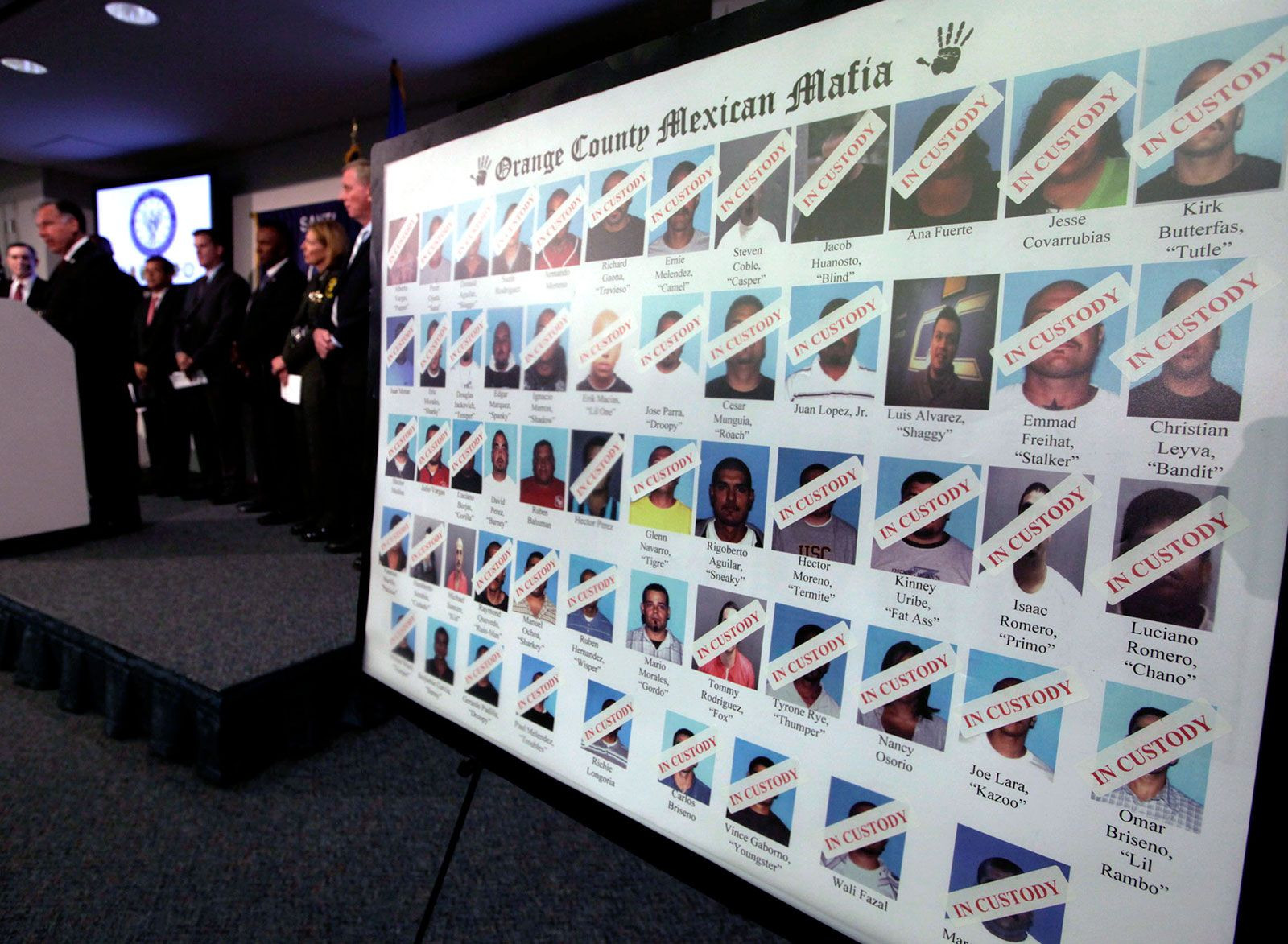The Mexican Mafia, also known as La Eme (Spanish for the letter “M”) and Los Carnales (“Brothers”), stands as one of the most notorious and lethal prison gangs and street gang networks operating in the United States. While its roots are firmly planted in Southern California, its influence extends across 13 states. This Mexican Gang is infamous for its unwavering secrecy, a strict code of silence, extreme violence, deep-seated animosity towards African Americans, and a cunning ability to infiltrate community programs for recruitment and agenda advancement. The U.S. Department of Justice estimates its prison membership to be between 350 and 400 full members, bolstered by tens of thousands of affiliated foot soldiers embedded within street gangs throughout California.
The Genesis of a Mexican Gang Powerhouse
The Mexican Mafia’s story began in 1957 within the walls of Deuel Vocational Institution, a high-security prison in California. Luis (“Huero Buff”) Flores, a former street gang member, is credited with founding this organization. His vision was to unite incarcerated leaders from various established Hispanic gangs in Los Angeles, creating a “gang of gangs.” This unified front was designed to exert ruthless control over the California prison system, the largest in the nation. Flores drew inspiration from the Sicilian Mafia, aiming to forge a powerful alliance by bringing together the heads of different Hispanic gangs. Membership in this Mexican gang is a lifelong commitment, secured through sponsorship and a blood oath. The gang’s symbols include the letter M and a distinctive black hand tattoo.
 Law enforcement officials announce arrests related to Mexican Mafia gangs in California.
Law enforcement officials announce arrests related to Mexican Mafia gangs in California.
The Mexican Mafia rapidly consolidated its power and expanded its ranks. Ironically, attempts by the California prison system to suppress the gang by transferring members to youth facilities and other prisons inadvertently fueled its growth. This dispersal led to the formation of factions within adult prisons, further solidifying the Mexican gang’s structure. By 1966, the Mexican Mafia had seized control of narcotics trafficking within the California prison system and was aggressively pursuing dominance over all illicit activities within state prisons.
During this period, other prison gangs emerged, prompting the Mexican Mafia to forge strategic alliances. They aligned with the Aryan Brotherhood, finding common ground in their shared antagonism towards the Black Guerrilla Family and La Nuestra Familia. Both the Mexican Mafia and the Aryan Brotherhood were united by their racial prejudice against African Americans. According to the FBI, both La Nuestra Familia and the Mexican Mafia primarily consist of Hispanic American members. However, a key distinction lies in their origins: Mexican Mafia members were largely recruited from barrios in metropolitan Los Angeles County, while La Nuestra Familia drew its members from the more rural, northern regions of California, areas often viewed as inferior by the Mexican Mafia.
Expansion Beyond Prison Walls
The Mexican Mafia’s influence soon transcended the confines of the prison system. In 1971, Joe (“Pegleg”) Morgan, despite being of Slavic descent, carried out one of the gang’s first street executions, murdering fellow gang member Alfonso (“Pachie”) Alvarez. This act solidified Morgan’s standing and he later rose to the position of “godfather” within the gang. This murder marked a turning point, signaling the Mexican gang’s expansion into organized crime beyond prison walls. As Mexican Mafia members were released on parole, they returned to the streets of Los Angeles and integrated into local gangs, exerting their influence and expanding the Mexican Mafia’s reach. This outward expansion resulted in thousands of members spread across hundreds of street gangs, creating a vast and lucrative criminal enterprise. Gang members who pledged allegiance to the Mexican Mafia became known as sureños, meaning “southerners” in Spanish.
In the same year, 1971, Rodolfo (“Cheyenne”) Cadena, a prominent early leader of the Mexican Mafia, directed paroled gang members to infiltrate self-help addiction programs and various community groups in East Los Angeles. Cadena’s objective was to establish a Mexican gang presence within as many Mexican American community organizations as possible. By doing so, the Mexican Mafia aimed to cultivate goodwill within the local population while simultaneously using these organizations as fronts for their criminal operations.
Mexican Gang Activity in the 21st Century
In the 21st century, the Mexican Mafia’s criminal portfolio encompasses a wide range of illegal activities, including robbery, extortion, assault, murder, weapons trafficking, and the trafficking and distribution of illicit drugs such as heroin and methamphetamine. This Mexican gang exerts control over territories in and around Los Angeles, dictating the operations of local affiliated gangs and levying a “tax” on their activities in exchange for operating within these territories. It wasn’t until 2002 that a high-ranking member of the Mexican Mafia defected and cooperated with the federal government, providing crucial confirmation of the organization’s hierarchical structure. In the early 2000s, rumors circulated about the Mexican Mafia ordering an “ethnic cleansing” within their territories, instructing affiliated gangs to target African Americans.
The Mexican Mafia remains a significant threat, a testament to the enduring power and reach of Mexican gangs within and beyond the prison system. Their complex structure, brutal tactics, and expansionist ambitions continue to pose challenges for law enforcement and communities alike.